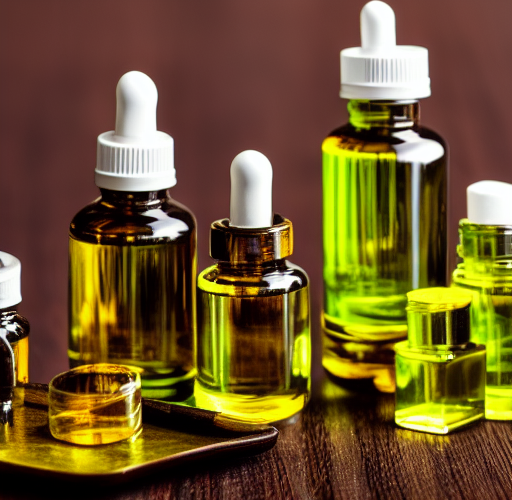CBD oil is becoming increasingly popular as people learn about its many benefits. But many people don't know how to use it properly.
In this blog post, we'll discuss everything you need to know about using CBD oil. We'll cover topics such as dosage, administration methods and what to look for when buying CBD oil. We'll teach you how to use it safely and effectively.
So, if you are interested in learning more about CBD oil, keep reading!
What is CBD oil and where does it come from?
CBD oil is an oil produced from the hemp plant that contains cannabidiol (CBD), a compound that has been shown to have various health benefits.
The hemp plant is a cousin of marijuana, but contains only trace amounts of THC, the psychoactive compound found in marijuana. CBD oil is legal in all 50 U.S. states, as well as the vast majority of countries around the world (up to a certain concentration of THC) and can be used for a variety of purposes, including reducing inflammation, relieving pain and improving sleep.
In Poland, as of May 7, 2022, the permissible concentration of THC in CBD oil is <0.3%.
CBD oil is made by extracting CBD from the hemp plant and then diluting it with a carrier oil, such as coconut oil or olive oil. It can also be consumed as an extract by dropping it under the tongue or mixing it with food.
Benefits of using CBD oil
The current medically confirmed use of CBD by the Food and Drug Administration (FDA) is for the drug Epidyolex, which is used to treat two types epilepsy and in treatment of epileptic seizures With rare genetic diseases (e.g., with Dravet syndrome).
The following excerpt outlines the American Epilepsy Society's (AES) position on cannabis as a therapeutic option for patients with epileptic seizures.
Recently published randomized clinical trials (double-blind, placebo-controlled) for a purified, highly concentrated formulation of cannabidiol (CBD) have shown that CBD is moderately effective in treating patients with seizures in both Lennox-Gastaut syndrome (LGS) and Dravet syndrome. However, these studies also showed that CBD has more side effects than placebo and revealed previously unrecognized drug-drug interactions. The results of these studies led to FDA approval on June 25, 2018. a pharmaceutical formulation containing purified cannabidiol (Epidiolex). It is worth noting that scientific evidence of a similar level does not currently exist in the medical literature for other CBD formulations.
American Epilepsy Association
You're likely to find a lot of information about how CBD oil is known for its anti-inflammatory or pain-relieving properties, or that it is sometimes used for symptoms of anxiety, depression, chronic pain, arthritis or other conditions. Such opinions can often come from consumers themselves. The truth is that objective studies that would confirm or rule out such positive effects of CBD oil are still ongoing. It is a multi-year process and there is currently no confirmed information on such broad medical properties of CBD products. For decades, CBD research has been hampered by the status of hemp (C. sativa L.) as an illegal drug.
The same is true of the information that CBD oil is helpful in boosting the immune system, improving heart health and aiding weight loss. While intensive research into CBD oil's medicinal properties is ongoing, we don't know.
Work is currently underway to determine the effectiveness of CBD oil in reducing anxiety and relieving pain in humans and animals, and for its potential applications in treating other conditions, such as cancer (through its effects on the central nervous system, stimulation of the immune system, or anti-cancer properties), schizophrenia or Alzheimer's disease. For the time being, however, there are more expectations about CBD's effects than hard evidence.
CBD oil is non-psychoactive, meaning it does not produce the "high" associated with marijuana use. This makes it an attractive option for people who are looking for relief from symptoms at which it can potentially provide relief, without the side effects of marijuana.
Especially if you are taking medications, we recommend consulting with your doctor before using CDB oil. The material is based on publicly available information and should not be considered a medical opinion.
What is CBD used for?
From the results surveys shows that users of CBD oils were most likely to use them for conditions such as:
- chronic pain
- arthritis/joint pain
- anxiety
- depression
- bezsenność i inne zaburzenia snu
- Migraine, intense headache, tension headaches
- PTSD (post-traumatic stress disorder).
- nausea
- cancers
- allergies or asthma
- Epilepsy or other seizure disorders
- multiple sclerosis
- COPD (chronic obstructive pulmonary disease) and other lung diseases
- Parkinson's disease
- Alzheimer's disease.
Studied also statements from Reddit users in terms of statements about CBD products and in which cases it is used. The most common statements about CBD came in the context of medical conditions (in that order):
- psychiatric
- orthopedic
- sleep-related
- neurological
- gastroenterology.
Doubts with the real effects of CBD oils taken in low doses prompted researchers to conduct more surveys.
Many CBD users have declared that CBD can improve problems with sleep, stress and anxiety, and be taken to improve overall health and well-being.
How to use CBD oil?
CBD oil can be used in several ways. You can put it under your tongue, swallow it in food or drink, or apply it to your skin.
Under the tongue is the most common way to use CBD oil, as this allows for the greatest absorption. To do this, place a few drops of CBD oil under the tongue and hold it there for 30-60 seconds.
You can also add CBD oil to food or drinks, but in part the oil may remain on the walls of a vessel such as a cup, as it does not dissolve in water. If you consume the oil in this way, remember that the effects will come at the earliest about 1 hour after consumption.
Finally, you can apply CBD oil topically to areas that hurt or are inflamed. Still another way besides applying it directly to the skin is to use CBD oil as an additive to topical products such as creams and lotions.
The most optimal way is to squirt CBD oil under the tongue during or after eating and hold it for about 30 seconds, then swallow. There are foods that react well with CBD oil, increasing its positive effects. This is especially true of fats like guacamole, dressing or smoothies based on a vegetable drink or milk.
The following products go well with CBD oil: avocados, olive oil, nuts, other oils (coconut, sesame, soybean), fish, butter, eggs or cheese, among others. Consumption of these products activates enzymes in the body responsible for digesting fats, allowing CBD to be more easily absorbed.
The best way to find the most effective dose and delivery method for you is to start with a small dose and gradually increase as needed.
Contraindications to the use of CBD oil
CBD oil should not be used by pregnant women or breastfeeding mothers. CBD oil is absolutely not intended for children. It can also interact with certain medications, so it's important to talk to your healthcare provider before using CBD oil, especially if you are taking any prescription medications.
No matter what shape you are in, always consult your doctor before starting any supplement intake.
It's also important to note that some people may experience adverse effects such as drowsiness while taking CBD oil, so if you plan to use it during the day, be sure to plan accordingly.
Potential side effects of CBD oil use
CBD oil is considered very safe and well tolerated by most people. CBD oil has been tested and approved for marketing. However, as with any substance, there can be potential side effects of using CBD oil. These can range from mild to more serious side effects.
The most common potential side effects include:
Drowsiness: Some people may experience drowsiness after taking CBD oil. This is often related to the calming effects of some cannabinoids, such as THC. If you plan to use CBD oil go during the day, be sure to plan accordingly.
Dry mouth: Dry mouth is the most common side effect of CBD oil use. This is due to the increase in saliva production that occurs when CBD interacts with the endocannabinoid system.
Diarrhea: Diarrhea can occur due to increased digestive activity. This may be caused by CBD oil or interactions with other medications.
Rarer are:
Changes in blood pressure: CBD oils may cause slight changes in blood pressure.
Dizziness: Dizziness can be caused by CBD oil or THC oil. This is related to the possible effect of CBD on blood pressure.
Sleep disorders: Sleep disorders can also occur with the use of CBD oil. This is often caused by the calming effects of CBD oil.
Vomiting: Vomiting may occur when CBD oil is consumed in a higher dose than recommended.
Tips for safe and effective use of CBD oil
Here are some general top tips that can help you use CBD oil safely and effectively:
- Remember to start with a small dose and gradually increase it until you reach the desired dose.
- If you get prescription drugs, be sure to consult your doctor before starting CBD oil.
- Some people may experience drowsiness after taking CBD oil, so if you plan to use it during the day, keep this in mind.
- Monitor your well-being regularly and seek medical attention if you notice any worrisome symptoms.
- At first, start using CBD oil during the day, not before you go to bed. This will allow you to closely monitor your body's response.
- The time of use, on the other hand, should ultimately depend on the intended purpose of taking the oil. If you're taking CBD for a good night's sleep, adding it to your evening cocoa is a great idea, but if you're looking to help with muscle recovery after a strenuous workout, use CBD every morning right after your workout.
To sum up about the use of CBD oil
CBD oil has many benefits and can be used in a variety of ways. You can put it under your tongue, swallow it in food or drink, or apply it to your skin.
The easiest way is to add CBD oil to food or drinks. In turn, the most optimal way is to take CBD oil under the tongue and hold it there for 30 seconds, then swallow. For best results, it's a good idea to do this right after or during a meal (preferably if there are additional fats in our food).
As for the use of CBD oil on the skin, it is possible to apply it directly or as an additive to a skin cream or body lotion.
Whichever way you choose, dose CBD oil in moderation to see how your body reacts to it. Although CBD oil is considered safe, some side effects may occur. Therefore, especially those taking prescription medications should always consult with their doctor before starting CBD oil.

